Manitoba Willows c.1929–31
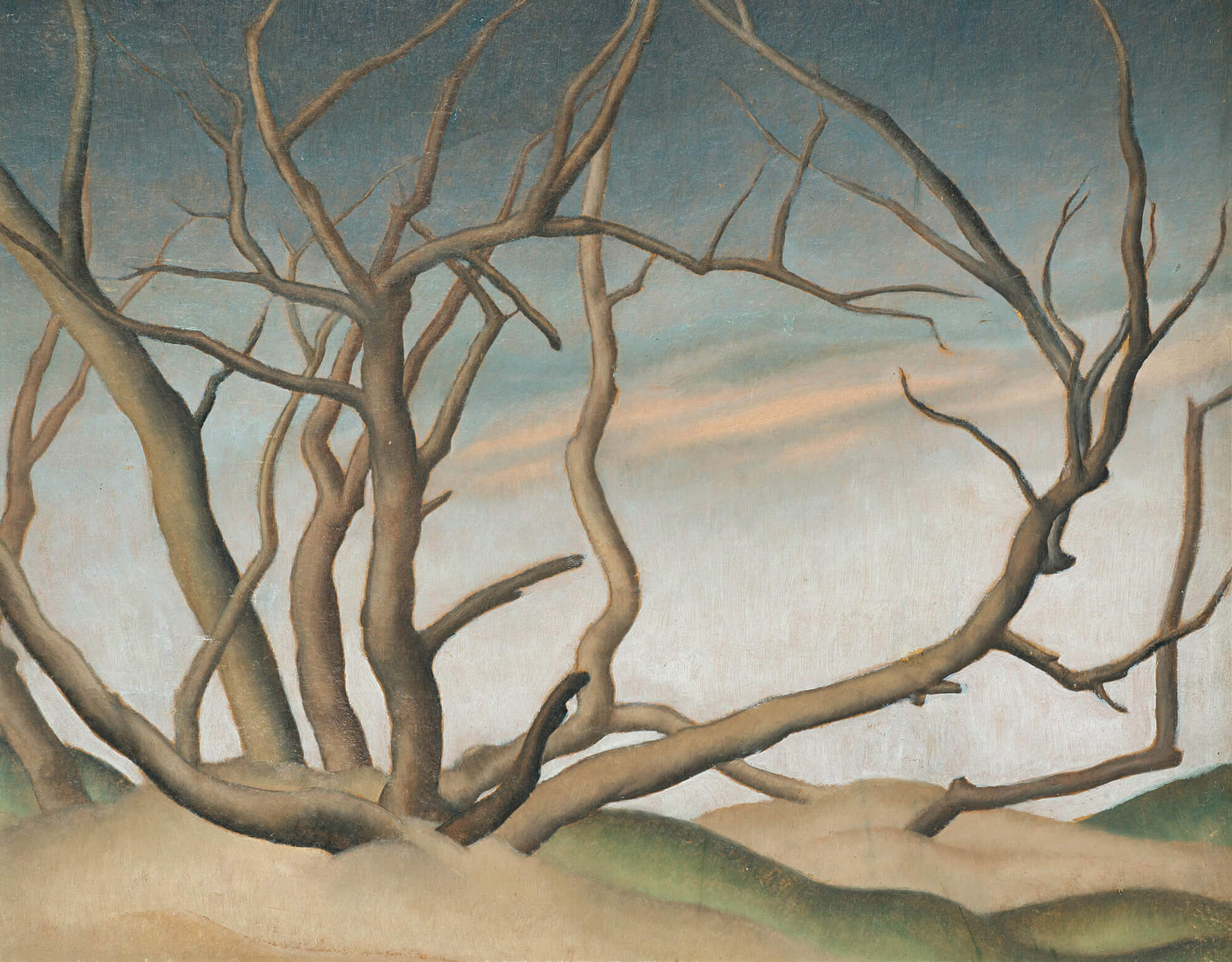
Bertram Brooker, Manitoba Willows, c.1929–31
Oil on canvas, 30 x 38 cm
Private collection
Manitoba Willows marks a turning point in Brooker’s career. By 1929, the year he met the painter Lionel LeMoine FitzGerald (1890–1956), he had moved well beyond Lawren Harris (1885–1970) in his use of abstraction. Following FitzGerald’s lead, Brooker here, and for the first time, fully fuses abstract and representational elements. Art historian Joyce Zemans suggests a reason for this shift: “Brooker came to realize that most people could not respond to his abstract ‘world and spirit paintings’ and turned from his early experiments in abstraction.”
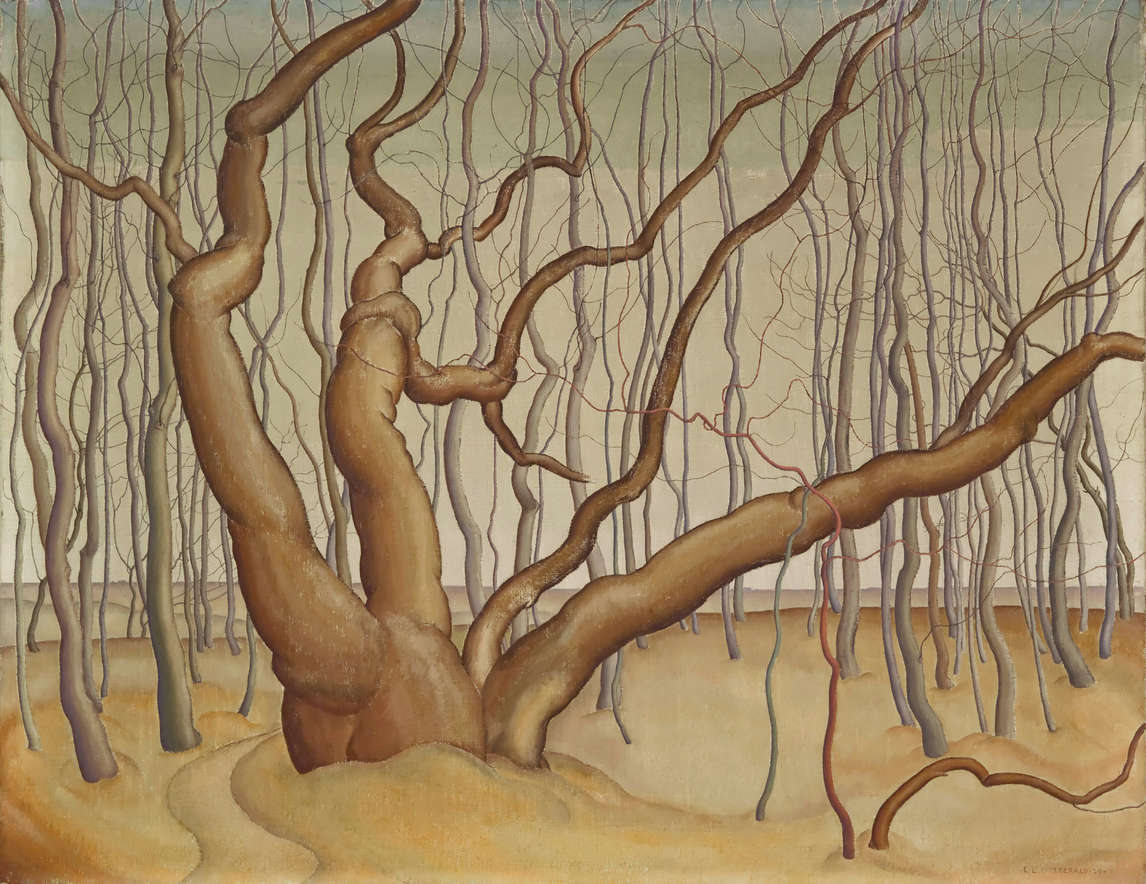
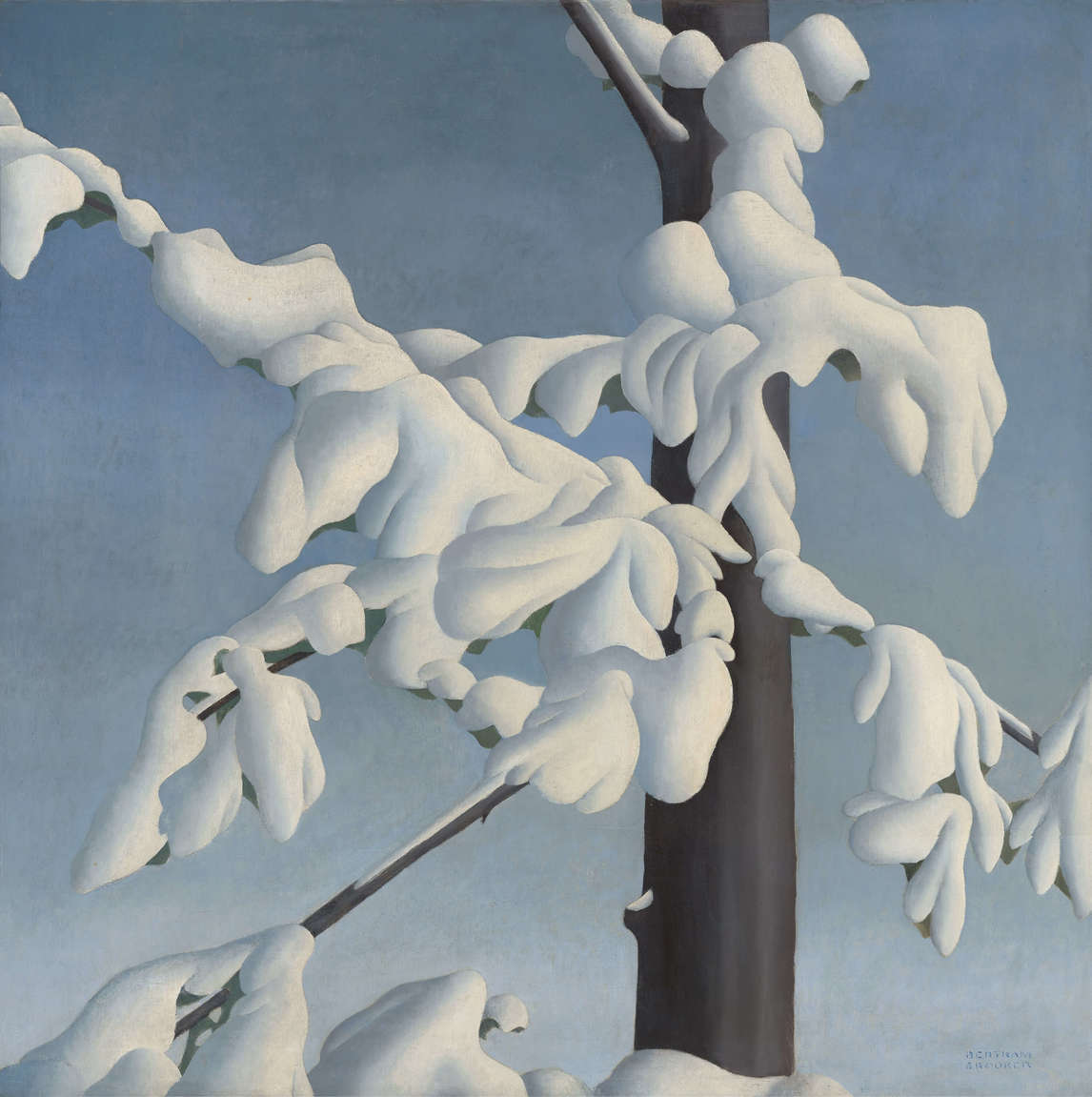
The influence of FitzGerald on Brooker can be seen in the careful balance between representation and abstraction. The trees are obviously trees, but they are devoid of excess detail, reduced to essentials, and ultimately symbolic. Although Brooker’s branches are viewed against a more radiant landscape than are FitzGerald’s in Poplar Woods (Poplars), 1929, for example, when compared, the two works reveal the synchronicity between the two artists.
This new turning in Brooker’s art can also be seen in Snow Fugue, 1930, where the contrast between the snow clinging to the branches and the tree trunk is startling. The snow is meticulously painted—especially in the interactions between the blues, whites, and greys. Here Brooker renders nature with masterful scientific precision. The artist’s use of the musical term “fugue,” in which two (or more) voices are in contrapuntal opposition to each other, calls the viewer’s attention to the complex shapes of the snow as opposed to the relative simplicity of the tree trunk.
From this point forward Brooker’s career would be devoted increasingly to finding various ways to mix abstraction and representation, although he continued to paint abstracts through to 1931 and would occasionally return to abstraction during the rest of his career.

 About the Author
About the Author
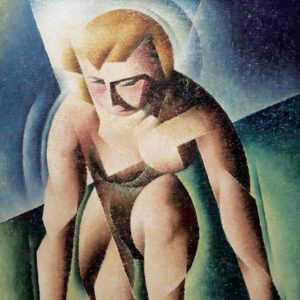 More Online Art Books
More Online Art Books
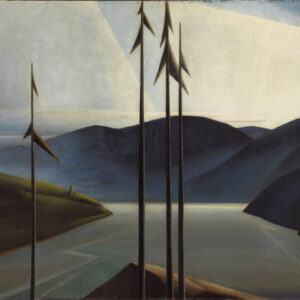 Acknowledgements
Acknowledgements